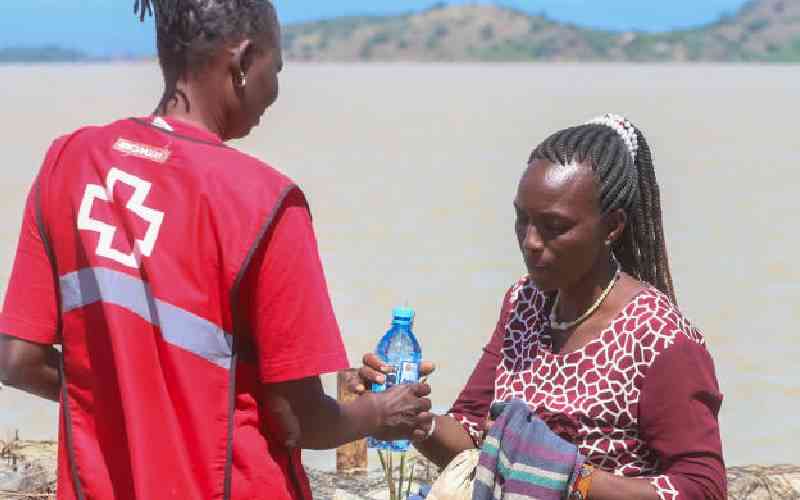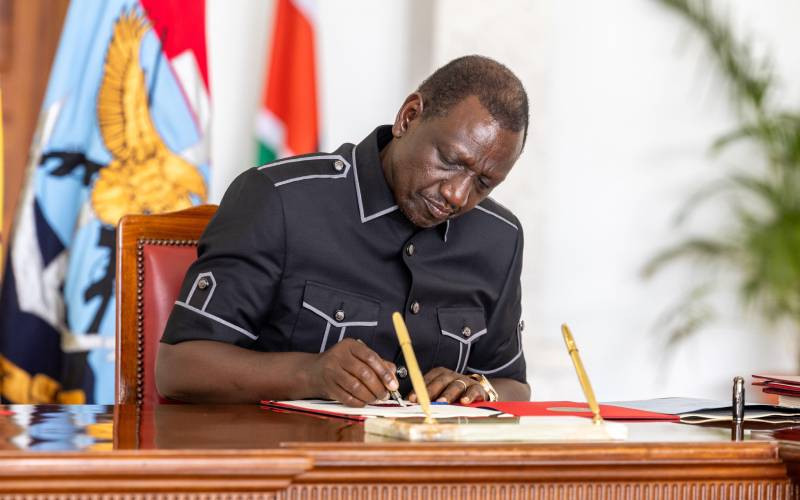The recent attack on the Kenya Defense Forces (KDF) camp in El Adde has cast a huge doubt on the effectiveness of the military strategy to defeat and eliminate Al-Shabab in Somalia. The attack, which occurred on 15 January 2016, not only deliberated the KDF, but also left dozens dead. In the last weeks, the KDF attack in El Adde, Somalia has generated mixed reactions on the responsibility in the planning and the execution of the attack. It is argued that the local clan, Marehan, living adjacent to the KDF camp in El Adde has played a crucial role in the planning of the attack. The key question that emerges from all the developments that have taken place since the attack has been the factors that may have caused the AMISOM team, including the KDF, to lose the support of locals, even when it is pretty evident that the African Union Mission in Somalia has brought a level of stability.
When Kenya sent her troops to Somalia in 2011, majority of Kenyans, as well as the International community lauded the government for what appeared as a brave move to contain the Al Shabaab. It is no doubt Al Shabaab had wreaked havoc to the Kenyan tourism industry by kidnapping visitors along the Kenyan coast and killing innocent civilians in grenade attacks in Kenya’s big cities, Nairobi & Mombasa. The crude tactics of suicide attacks, the ambush of soldiers, civilians and guerrilla type warfare had made it increasingly difficult for Kenya to fish out Al Shabaab fighters in the country. The only plausible solution at it appeared (in the eyes of Kenyans) was smoking out Al Shabaab forces from the hideouts in Somalia. Nonetheless, in doing so, Kenya not only threatened the peaceful relations that it had enjoyed with Somalis, who perceived Kenya as good neighbor, but also infuriated locals who term the KDF intervention as an “invasion”.
The entry of KDF into Somalia did not enjoy the support of the dysfunctional Somali government at the time. Even though the Somali President does not have the support of the entire nation, getting into the country with no regards to the government in place is always a move that sparks some form of resistance from the locals. In addition, soon after capturing Kismayu, Somalia, the corruption within the KDF has compromised its institution. The KDF has been accused by the UN Monitoring Group and many other international bodies as being the key beneficiaries of illegal charcoal business in Kismayu. Such activities have goaded many Somalis and prompted the current Somali parliament to call for the withdrawal of the KDF from Somalia. KDF soldiers have also been implicated in the business of smuggling sugar from Kismayu and some of the revenue from this trade as well as the charcoal trickles down to the Al Shabaab fighters. Thus, corruption has posed significant challenges to the KDF ability and capacity to eliminate Al Shabaab fighters.
Perhaps the most worrying factor is the fact that KDF did not enjoy the support of the locals in the El Adde area, where the KDF camp was located. The Marehan clan has however displayed their disapproval of the presence of the KDF in their clan-land. The equation has been compounded by the allegation that the KDF has been working with other clans in the region, such as the Ogaden, which are perceived as rivals by the Marehan. Here, the AMISOM, particularly, the KDF have failed to involve the locals in their agenda to root out Al-Shabaab sympathisers and fighters. While the fear to involve the Somali clans in the KDF military strategy is understandable, the operations carried out in the Somali territory without the support and involvement of the people in any way is ultimately expected to generate suspicion and animosity.
If Kenya is going to defeat Al Shabaab, it is crucial that the locals are involved in and outside Kenya. It is the locals who know the training grounds, the hiding grounds and the sources of revenue for the terrorist group. In this light, it would be a gargantuan task to expect to win a war that the locals are not ready to fight and unwilling to allow others fight. The moves by the KDF to blame locals for the recent attack on one of its camps in Somalia is not only ill advised, but will also compound the equation that is already complex. Blaming locals will only serve to augment the animosity towards foreign troops. It is also very important that the Kenyan government be at the forefront in resolving the allegations with the locals who have also suffered from cruel acts of Al Shabaab, so as to combine efforts in fighting a common enemy- Al Shabaab.
The tactics that the KDF are using to regain the lost ground and fish out attackers may also be a recipe for disaster. While the attacks of the Western powers may work in Syria due to their military capability and nature of the ISIS operations, the KDF aerial attacks are imprecise and killing innocent civilians and their livestock. In the case of Somalia, only ground troops can help defeat Al Shabaab.
The Somali quagmire will not be solved by military strategies that hurt innocent civilians and policies that blame locals for the failures and casualties sustained. KDF must strive to address the grievances with the locals, especially the Marehan clan. Kenya should also consider removing its force in Somalia and urge the AU to form a strong military group, with the exception of countries that neighbor Somalia, to avoid retaliatory attacks, such as the Garissa and Westgate attacks.
Kenya's incursion into Somalia also ended the good neighbour relationship that both countries enjoyed. Unlike Ethiopia, Kenya’s good neighbour relations led many Somalis to seek refuge in Kenya and today Dadaab is the largest refugee camp in the world.
Therefore, peace and stability in Somalia can only be restored when the AU or international forces take the lead to replace the active presence of neighboring countries, including Kenya, Ethiopia and Djibouti.
Abdirizak Sh. Ali Ahmed
[email protected]
Columbus, Ohio
 The Standard Group Plc is a
multi-media organization with investments in media platforms spanning newspaper
print operations, television, radio broadcasting, digital and online services. The
Standard Group is recognized as a leading multi-media house in Kenya with a key
influence in matters of national and international interest.
The Standard Group Plc is a
multi-media organization with investments in media platforms spanning newspaper
print operations, television, radio broadcasting, digital and online services. The
Standard Group is recognized as a leading multi-media house in Kenya with a key
influence in matters of national and international interest.
 The Standard Group Plc is a
multi-media organization with investments in media platforms spanning newspaper
print operations, television, radio broadcasting, digital and online services. The
Standard Group is recognized as a leading multi-media house in Kenya with a key
influence in matters of national and international interest.
The Standard Group Plc is a
multi-media organization with investments in media platforms spanning newspaper
print operations, television, radio broadcasting, digital and online services. The
Standard Group is recognized as a leading multi-media house in Kenya with a key
influence in matters of national and international interest.







